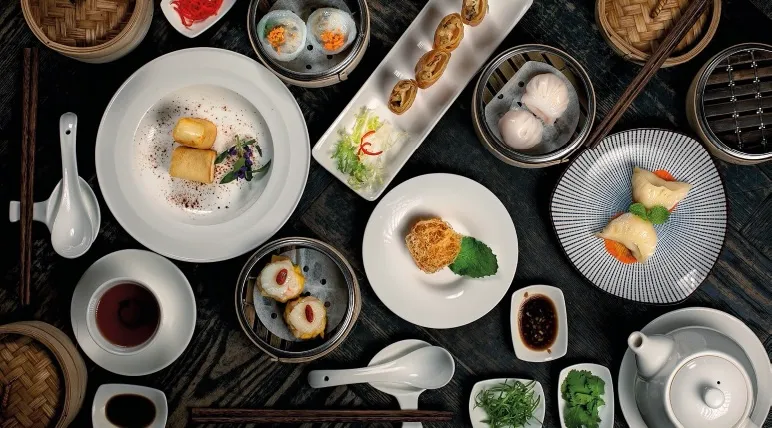If food reflects a society’s lifestyle at any given point in time, the same goes for the way we set our table, be it for our everyday meals or for the more formal, festive occasions.
某个时期的社会生活方式不仅体现在食物中,还体现在人们布置餐桌的方式中,无论是日常用餐还是更正式的节日聚餐。

China has a millenary culinary tradition, and food is an important part of Chinese culture. Like in many other civilisations, Chinese cuisine has evolved, and so have table manners and table setting, or so we think. Then there’s the incredible diversity of cultures, traditions and even languages that coexist in this immense country, which makes any attempt at generalising a pitiful cliché. Yet if we were to pick a single transversal trait to Chinese society at large, it would have to be the widespread passion for food and the way it is enjoyed.
中国拥有长达数千年的烹饪传统,美食是中华文化的重要组成部分。在外人看来,中国,一如众多其他文明,其美食、餐桌礼仪和餐桌布置不断变迁。这个广袤的国度拥有丰富多样的文化、传统甚至语言,因此任何概括性的说法都有失偏颇。然而,对食物和烹饪方式的广泛热情,却是贯穿整个中国社会的共同特征。
The way the table is set depends directly from table manners, and the kind of food that is served. Round tables are generally preferred as they facilitate conviviality. In the traditional Chinese basic setting, a plate sits in front of each diner. A soup bowl may be placed on top of it. Around this central piece, clockwise and starting from the left, the napkin, a rice bowl, a tea cup, a small sauce dish, a spoon, a chopstick rest and, of course, the chopsticks themselves. From here, there are infinite possibilities as to the quality, the refinement and the value of the crockery and the accessories involved.
布置餐桌的方式直接取决于餐桌礼仪,以及所提供的食物种类。圆桌适用于欢宴的场合,通常是中国人的首选。在中国传统中,每名用餐者面前都有一个盘子,上面放置一个汤碗。围绕着这个核心组合,从左侧起,顺时针摆放餐巾、饭碗、茶杯、味碟、勺子、筷托,以及筷子。这些餐具和配件在品质、精致程度和价值方面拥有无限可能性。
More daring settings may incorporate some additional fusion elements, like forks and knives, and glasses for water and wine, which are generally laid out following the same globalised rules applying to “Western style” table setting.
更大胆的做法可能会融入一些额外元素,如刀叉和高脚杯,通常遵循摆放“西式”餐桌的国际惯例。
Food is served in communal dishes placed at the centre of the table, often on a lazy Susan (not a cliché) to facilitate serving. Dishes are not passed around, but guests reach for the communal dishes and place food on their individual plates. If no serving utensils are provided, guests can use the back end of their chopsticks to serve themselves.
为了方便夹菜,食物均摆放在桌子中央的公共菜盘上,下方通常垫有转盘(中国各地都是如此)。这样一来,每位宾客都可以通过旋转底部的转盘够到公共盘,并从中夹取食物放到自己的盘子里,无需互相传递菜肴。如果没有提供公筷,宾客可以将筷子反过来夹菜。
版权归广东奥马冰箱有限公司所有,转载请注明出处。































